Choosing the right kitchen flooring is crucial, demanding a balance between durability, style, and easy maintenance. This article explores the top 5 kitchen flooring ideas designed to withstand the daily wear and tear of a busy kitchen, focusing on materials known for their exceptional longevity and resistance to moisture, scratches, and stains. Discover the perfect blend of practicality and aesthetic appeal to transform your kitchen into a space that’s both beautiful and built to last.
Ceramic Tiles for Easy Maintenance
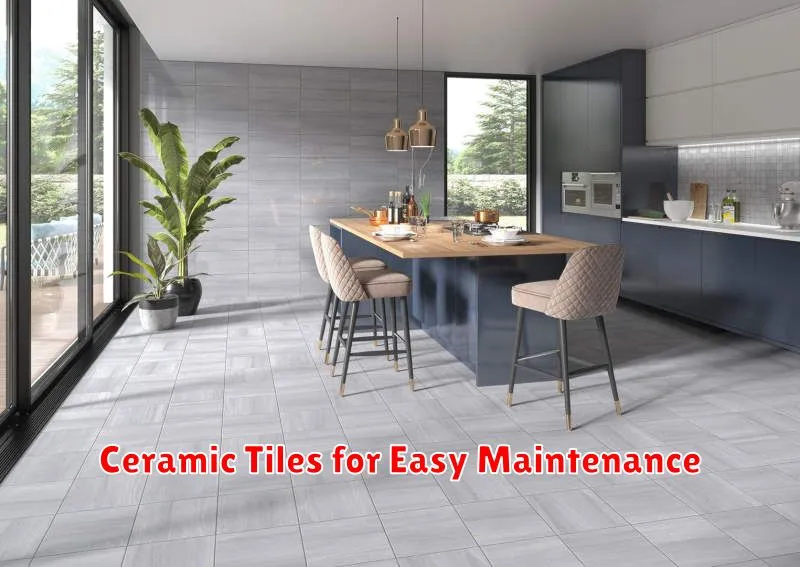
Ceramic tiles offer a compelling solution for those seeking low-maintenance flooring and wall coverings. Their inherent durability and resistance to staining, scratching, and water damage make them an ideal choice for busy households and commercial spaces alike.
The ease of cleaning is a significant advantage. A simple sweep or vacuuming removes loose debris, while damp mopping easily tackles most spills and dirt. Unlike carpets or certain hardwood floors, ceramic tiles resist the absorption of liquids, preventing the growth of mold and mildew, thus reducing the need for specialized cleaning products and procedures.
Durability is another key feature. Ceramic tiles are exceptionally resistant to scratching and chipping, far exceeding the lifespan of many alternative flooring options. This longevity translates to cost savings in the long run, as replacements and repairs are less frequent.
Furthermore, water resistance makes ceramic tiles perfectly suitable for bathrooms, kitchens, and other areas prone to moisture. This resistance not only prevents water damage to the underlying structure but also inhibits the growth of harmful bacteria and fungi.
While some specialized cleaning agents might be beneficial for stubborn stains, the overall maintenance required for ceramic tiles is minimal. Regular sweeping and occasional mopping are usually sufficient to keep them looking their best for years to come. This low-maintenance nature contributes to their enduring popularity as a practical and aesthetically pleasing flooring and wall covering choice.
Wooden Flooring for Warmth
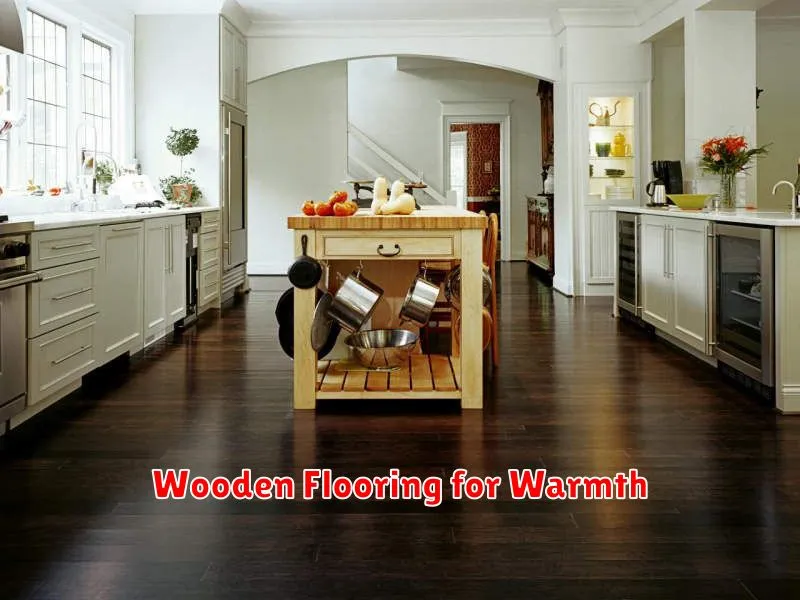
Wooden flooring offers a timeless elegance and enduring appeal to any home. Beyond its aesthetic qualities, however, lies a significant advantage: its ability to contribute to a warmer, more inviting atmosphere. This warmth is multifaceted, encompassing both the literal and the figurative.
From a practical standpoint, wood acts as a natural insulator, retaining heat more effectively than many other flooring materials like tile or stone. This means less energy consumption to maintain a comfortable indoor temperature, resulting in cost savings on heating bills, especially during colder months. The thermal properties of wood contribute to a consistently warmer feeling underfoot.
Beyond the physical warmth, wooden floors contribute to a sense of cozy comfort. The natural texture and grain of the wood create a visually appealing and tactile experience. The warm tones of many wood species, such as oak or cherry, further enhance this feeling of warmth and contribute to a more inviting and relaxed environment. The inherent beauty of wood adds a touch of sophistication and elegance, transforming a simple space into a welcoming haven.
However, it is crucial to consider the type of wood and its finish when aiming for maximum warmth. Hardwoods generally offer superior insulation compared to softer woods. Additionally, the color of the wood can influence the perceived warmth. Darker wood tones tend to absorb more light and can make a room feel cozier, while lighter tones can create a brighter, airier feel.
In conclusion, choosing wooden flooring is a decision that extends beyond mere aesthetics. Its inherent ability to provide both physical and perceived warmth makes it an excellent choice for those seeking to create a comfortable and inviting home environment, while also potentially offering long-term financial benefits.
Vinyl Flooring for Budget-Friendly Homes
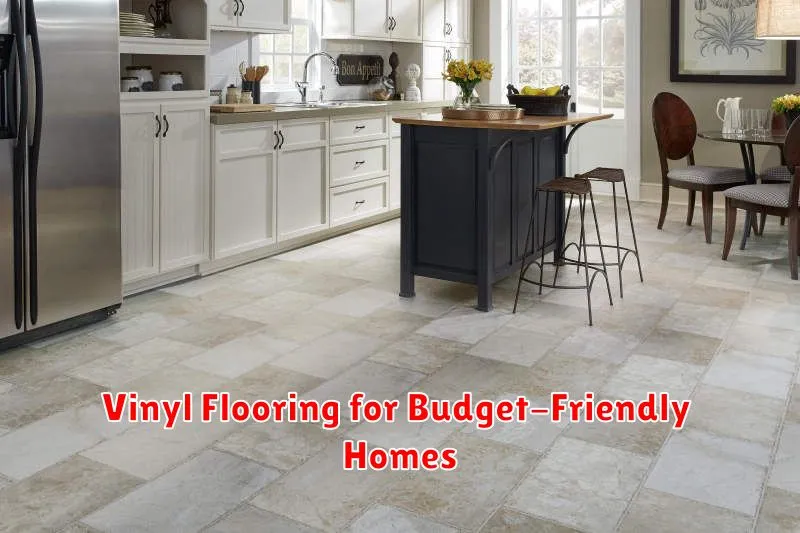
Vinyl flooring presents a compelling solution for homeowners seeking affordable and durable flooring options. Its relatively low cost compared to materials like hardwood or tile makes it an attractive choice for budget-conscious individuals looking to renovate or build a new home. This affordability doesn’t compromise on practicality; vinyl offers a range of styles and designs to suit various aesthetic preferences.
One of the key advantages of vinyl is its durability. It is resistant to scratches, stains, and water damage, making it particularly suitable for high-traffic areas and homes with children or pets. This resilience translates to long-term cost savings, as replacement or extensive repairs are less likely to be needed compared to more delicate flooring materials. The easy installation process is another significant benefit, often allowing for DIY projects and reducing labor costs.
Furthermore, vinyl flooring boasts impressive versatility in terms of design. Modern vinyl mimics the appearance of natural materials like wood and stone with remarkable accuracy, providing a sophisticated aesthetic without the hefty price tag. From classic wood grains to sleek marble patterns, the array of available designs ensures a suitable option for any interior style. This design flexibility enables homeowners to achieve a high-end look without exceeding their budget.
However, it’s important to acknowledge potential limitations. While durable, certain types of vinyl may show wear and tear over extended periods of high-use. Also, the perceived lower quality compared to some alternatives can affect resale value, although the cost savings during the initial installation can offset this. Careful consideration of the specific type and quality of vinyl is crucial to maximizing its longevity and aesthetic appeal.
In conclusion, vinyl flooring offers a viable and attractive option for homeowners prioritizing budget-friendliness without compromising on durability and style. Its affordability, ease of installation, and design versatility make it an excellent choice for a wide range of residential projects. However, potential buyers should weigh the long-term implications and carefully choose a product suitable for their specific needs and lifestyle.
Stone Flooring for Luxury Kitchens
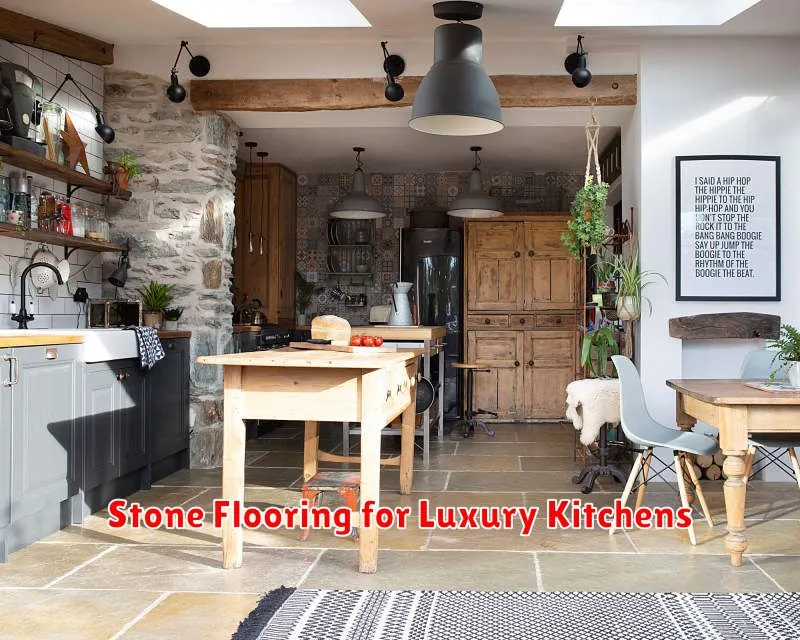
Stone flooring offers unparalleled elegance and durability, making it a premium choice for luxury kitchen design. The inherent beauty and natural variation found in stone creates a unique and sophisticated atmosphere, instantly elevating the space.
A wide array of stone types are suitable for kitchen applications, each possessing its own distinctive characteristics. Marble, for example, is known for its luxurious veining and classic appeal, while granite provides exceptional strength and stain resistance. Quartzite combines the beauty of marble with the durability of granite, offering a truly exceptional option. Limestone adds a softer, more rustic charm, depending on the finish.
The durability of stone flooring is a significant advantage in a high-traffic area like a kitchen. With proper sealing and maintenance, stone surfaces can withstand daily wear and tear, remaining beautiful for many years. Resistance to scratches, stains, and heat damage further enhances its longevity and practicality.
Beyond durability, aesthetic versatility is another key factor. Stone flooring seamlessly integrates with various design styles, from traditional to modern and contemporary. The diverse range of colors, patterns, and finishes allows for unparalleled customization, enabling homeowners to create a truly personalized kitchen space. Careful consideration of the size and shape of tiles can dramatically impact the overall aesthetic.
However, it’s important to consider the maintenance requirements. While durable, stone flooring requires regular cleaning and sealing to protect against staining and damage. The cost of stone flooring is also a significant factor, as premium stones can be considerably more expensive than other flooring materials. Despite the higher initial investment, the long-term durability and aesthetic value often justify the expense for discerning homeowners seeking a truly luxurious kitchen.
In conclusion, stone flooring presents a compelling option for those seeking to create a luxurious and enduring kitchen. The combination of beauty, durability, and versatility makes it a worthwhile investment, transforming the heart of the home into a stunning and functional space.
Laminate Flooring for Versatility
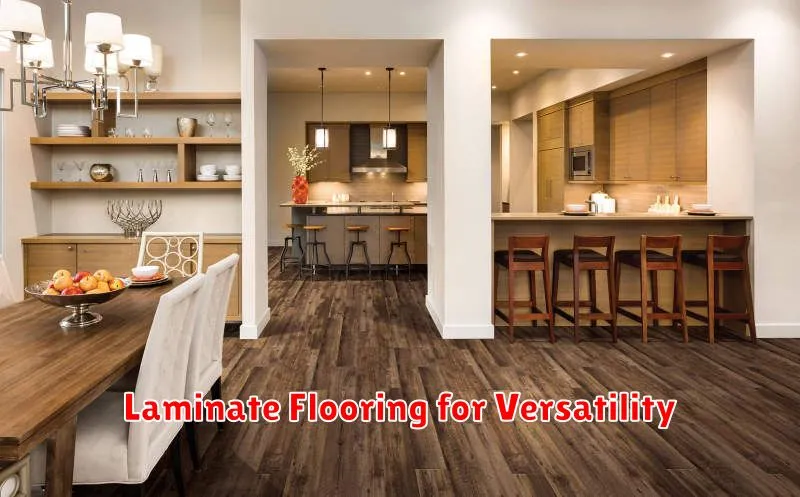
Laminate flooring has become a popular choice for homeowners due to its remarkable versatility. It offers a wide range of styles and designs, mimicking the look of natural materials like wood and stone, without the high cost and maintenance demands.
One of the key advantages of laminate is its durability. It’s resistant to scratches, dents, and stains, making it an ideal option for high-traffic areas such as kitchens and hallways. This strength translates into long-lasting beauty and value for your home.
Ease of installation is another significant benefit. Laminate flooring is typically designed with a click-lock system, allowing for quick and straightforward DIY installation. This reduces labor costs and allows for faster renovation projects. Furthermore, its easy maintenance makes it a practical choice for busy lifestyles.
The affordability of laminate flooring is undeniable. Compared to hardwood or tile, it offers a significantly more budget-friendly option without compromising on aesthetics. This makes it an accessible choice for homeowners on a variety of budgets.
Beyond its practical advantages, laminate flooring boasts considerable aesthetic appeal. The vast array of colors, patterns, and textures available allows for seamless integration with any interior design style, from contemporary to traditional. You can find options that perfectly complement your existing décor, creating a cohesive and stylish living space.
In conclusion, laminate flooring presents a compelling solution for homeowners seeking a balance between functionality, aesthetics, and affordability. Its versatility, durability, and ease of installation make it a top contender in the flooring market.

